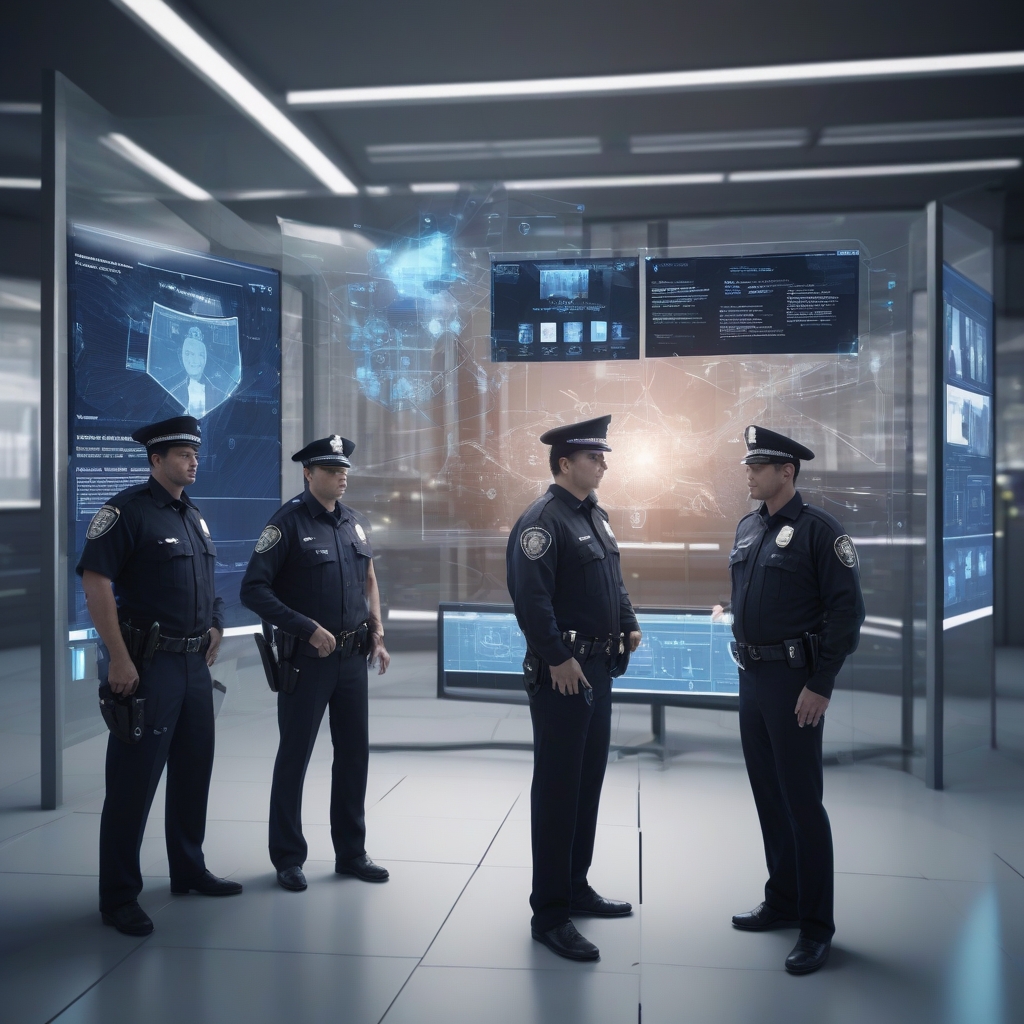Introduction to AI in Law Enforcement
The integration of artificial intelligence (AI) into various sectors has been nothing short of revolutionary, and its latest venture into law enforcement, particularly in police report writing, is poised to redefine how officers handle incidents, evidence, and data documentation. As technology continues to advance, the law enforcement industry must adapt to these changes to enhance efficiency and accuracy in police work. This article explores how AI is transforming police report writing and the potential implications of this technological leap.
The Evolution of Police Report Writing
Traditionally, police report writing has been a manual, time-consuming task that requires significant attention to detail. Officers must meticulously record incidents, interviews, evidence, and observations, often relying solely on their notes and memory. This process can be **prone to human error** and inconsistencies, impacting the quality and reliability of reports. Enter AI—a solution designed to streamline and improve the accuracy of police documentation.
AI-Powered Tools in Report Writing
AI technology offers an array of sophisticated tools that can assist in the report writing process. These include:
- Speech Recognition Software: Officers can use AI-powered speech recognition to dictate their notes, converting spoken words into text with remarkable accuracy.
- Automated Data Entry: AI systems can extract pertinent data from various sources, such as body cams and digital evidence, minimizing the need for manual input.
- Narrative Structuring: Advanced algorithms can organize data into coherent, comprehensive narratives, ensuring consistency and clarity.
- Language Processing: Natural Language Processing (NLP) helps refine language to make reports more readable and professional.
These tools not only expedite the process of creating reports but also enhance their quality by eliminating common errors and biases that can occur in human-generated documentation.
Case Study: Implementing AI in the Field
Several police departments around the world have already begun experimenting with AI to improve their operations. For instance, a police department in California utilized AI to automate routine tasks like report generation and data analysis. This resulted in a significant reduction in the time officers spent on paperwork, allowing them to focus more on fieldwork and community engagement. Moreover, the accuracy of the reports improved substantially, leading to more effective case management and better outcomes in court proceedings.
The Future of Policing with AI
The potential of AI in law enforcement extends beyond report writing. AI systems are beginning to reshape several facets of policing, offering new capabilities that enhance decision-making and operational efficiency.
Predictive Policing and Crime Analytics
AI-driven analytics can predict crime patterns by analyzing vast datasets, giving police the ability to allocate resources more effectively. Predictive policing algorithms use historical data, social media, and real-time information to forecast potential crime hotspots, enabling proactive measures.
Facial Recognition and Surveillance
Facial recognition technology, powered by AI, assists in identifying individuals from video footage and mugshots with high accuracy. While this technology raises ethical and privacy concerns, it also offers valuable insights in criminal investigations and locating missing persons.
Automated Emergency Dispatching
AI can streamline emergency response systems by automating dispatching processes, ensuring the fastest and most efficient allocation of officers to incidents. This leads to quicker response times and improved public safety.
Challenges and Ethical Considerations
While AI offers promising advancements for law enforcement, its adoption is not without challenges. Among the primary concerns is the issue of privacy and data security. The collection and analysis of vast amounts of data necessitate stringent security measures to protect citizens’ personal information. Additionally, reliance on AI raises questions about accountability and transparency in policing.
The Human Element: Collaboration Between AI and Officers
Despite the growing role of AI in law enforcement, the human element remains indispensable. AI serves as an augmentative tool rather than a replacement for police officers. Successful integration relies on a collaborative approach, where officers work alongside AI systems to achieve the best outcomes. Police training programs are evolving to include digital literacy and AI skills, enabling officers to effectively leverage technology in their duties.
Conclusion: Paving the Way for a Digital-Driven Future
The incorporation of AI into police report writing marks a significant step forward in modernizing law enforcement practices. As AI continues to evolve, it holds the promise of making police work more efficient, accurate, and transparent. However, it is essential to balance technological advancements with ethical considerations, ensuring AI is used responsibly and equitably.
Ultimately, the future of policing lies in the harmonious integration of human expertise and AI capabilities, leading to a more effective, equitable, and forward-thinking police force. As law enforcement agencies embrace AI, they pave the way for a transformational digital-driven future where technology enhances public safety and trust.

Leave a Reply